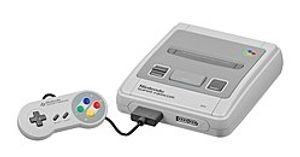


Designed by Masayuki Uemura, the designer of the original Famicom, the Super Famicom was released in Japan on Wednesday, November 21, 1990 for 25,000 yen ($210). It was an instant success; Nintendo's initial shipment of 300,000 units sold out within hours, and the resulting social disturbance led the Japanese government to ask video game manufacturers to schedule future console releases on weekends. The system's release also gained the attention of the Yakuza, leading to a decision to ship the devices at night to avoid robbery.
With the Super Famicom quickly outselling its chief rivals, Nintendo reasserted itself as the leader of the Japanese console market. Nintendo's success was partially due to its retention of most of its key third-party developers from its earlier system, including Capcom, Konami, Tecmo, Square, Koei, and Enix.
Nintendo released the Super Nintendo Entertainment System, a redesigned version of the Super Famicom, in North America for $199. It began shipping in limited quantities on August 23, 1991, with an official nationwide release date of September 9, 1991. The SNES was released in the United Kingdom and Ireland in April 1992 for £150, with a German release following a few weeks later.
Most of the PAL region versions of the console use the Japanese Super Famicom design, except for labeling and the length of the joypad leads. The Playtronic Super NES in Brazil, although PAL, uses the North American design. Both the NES and SNES were released in Brazil in 1993 by Playtronic, a joint venture between the toy company Estrela and consumer electronics company Gradiente.
The SNES and Super Famicom launched with few games, but these games were well received in the marketplace. In Japan, only two games were initially available: Super Mario World and F-Zero. (A third game, Bombuzal, was released during the launch week.) In North America, Super Mario World launched as a bundle with the console, and other launch titles include F-Zero, Pilotwings (both of which demonstrated the console's "Mode 7" pseudo-3D rendering capability), SimCity, and Gradius III.










